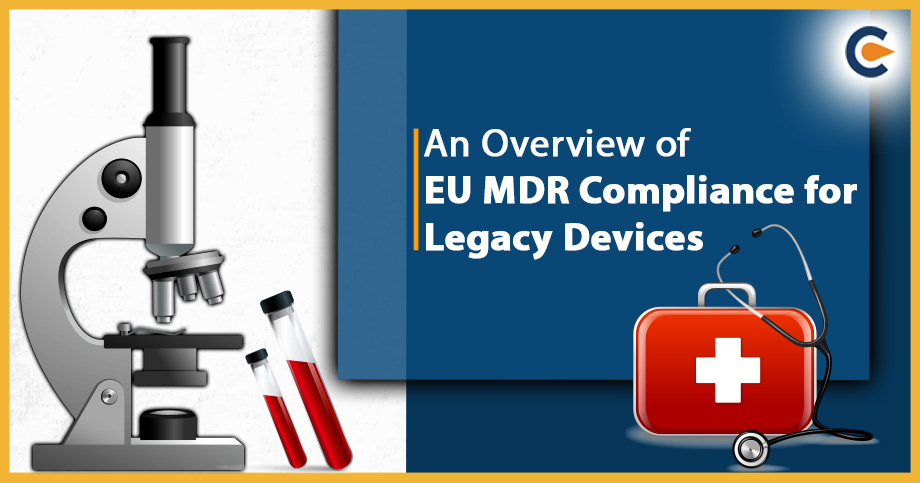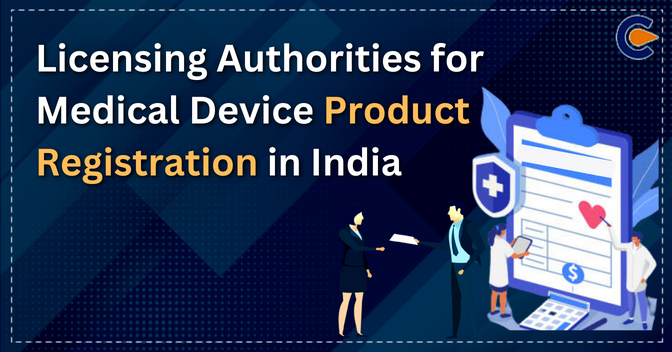The MDR is a comprehensive revamp of medical device regulation in Europe with the goal of enhancing quality and safety. Regulation (EU) 2017/746’s guidelines for in vitro diagnostic medical devices (IVD) have recently been expanded. Consequently, the regulation now covers a wider range of device kinds than it did in the past. The MDCG-set-up ad hoc task group, which was established to make decisions about the applicability of MDR requirements to legacy devices and devices covered by the Medical Devices Directive[1] (MDD), made this choice. In this write-up, we will discuss EU MDR Compliance for Legacy Devices.
EU MDR Compliance – A Brief
The European Medical Device Regulation is a new set of regulations that governs the production & distribution of medical devices in Europe & compliance with the regulation is mandatory for medical device companies that wish to sell their products in the European marketplace.
If your company was already compliant with the Medical Devices Directive (MDD), don’t be fooled into complacency – the MDR represents brand new regulations with a lot of changes.
MDR Structure
There are 174 pages in the new MDR document. It has a 13-page introduction, 123 articles spread across 10 chapters (79 pages), and 17 annexes (80 pages). The new regulations are far more extensive and complex than the MDD, which was only 60 pages long.
Additionally, the MDR has been modified or amended by the publication of 12 delegating acts in addition to 42 implementing acts that serve to explain or implement it.
Legacy Devices – EU MDR Compliance
In 2017, the EU revised the rules governing IVDR devices in the EU’s legislative framework. To eliminate any ambiguity over how the regulation applies to all devices, however, a new regulation was required. Eventually, the issue of how to handle legacy hardware and software arises. These are medical devices produced by companies that might still be lawfully purchased on the market today despite the new restrictions not applying to them. Even though the phrase “legacy devices” is regularly used, many people are still unclear on what it means. And this poses a challenge for both suppliers and producers.
A medical device that was authorized under the Medical Devices & in Vitro diagnostic medical devices (IVDs) and is still able to be sold legally in the EU is referred to as a legacy device.
The same regulations that apply to medical devices as a whole, such as registration and recurrent CE certification, also apply to legacy devices.
Criteria of IVDR Legacy Devices – EU MDR Compliance
- Precisely which devices come under the first, second, and third subparagraphs of Article 110(3) IVDR document, can be called legacy devices.
- These devices are IVDR legacy devices and correspond to the second and third subparagraphs. These devices are those that have been marketed, have been made available for service, or will be marketed through the end of the respective transition period specified in the 2nd and 3rd subparagraphs following the effective date of the IVDR (26 May 2022). (Provided they fulfil the criteria given in the 1st subparagraph).
- It may sound difficult, but all it is trying to convey is the idea that legacy equipment aren’t always outmoded or useless.
- A valid EC certificate issued under the Medical Devices Directive (MDD) or for in vitro diagnostic medical devices (IVDD) before May 26, 2002, suffices to grant them marketing authorization. Or, they already have an IVDD statement of compliance, but they still require a conformity assessment process including a notified body.
- Depending on when the legacy devices were introduced to the market or received certification, the MDR prolonged the transition period for them to various periods.
Registration for Legacy Devices
The instructions for registering legacy devices in EUDAMED are detailed in a document called “MDCG 2019-5 “Registration of Legacy Devices in EUDAMED April 2019”. The European Database for Medical Devices is called EUDAMED. New standards state that legacy devices must be registered in EUDAMED. When there is a significant incident involving the product or when a field correction is required for it, the registration of legacy devices is required.
New Identifiers for the Legacy Devices
According to EU MDR compliance for legacy devices, the legacy devices will have EUDAMED-DI, which is the same as UDI-DI, and EUDAMED ID, which is the same as UDI-DI instead of the previously assigned UDI-DI.
New Guidance on EU MDR Compliance for Legacy Medical Devices
A new guideline from the Medical Device Coordination Group (MDCG) of the European Commission outlines how MDR criteria should be implemented and applied for legacy devices and those that were put on the market before May 26, 2021. The MDGC 2021-25 divided medical devices into two groups and established an ad hoc task force to apply transitional requirements to legacy devices and those placed on the market before May 26, 2021, as specified in Article 120(3) of Regulation (EU) 2017/745 (MDR).
- Legacy devices: These are Class I sterile, Class I measuring, Class IIa, Class IIb, Class III (medical devices), or active implantable medical devices that were on the European market after May 26, 2021 and have current CE certificates.
- Old devices are those that were on the European market prior to May 26, 2021 and hold valid MDD or AIMDD certificates.
The guidance discusses the following three crucial application-related topics:
- Chapter VII of EU 2017/745’s medical device regulation (MDR) refers to “legacy devices.”
- Other EU MDR requirements to “legacy devices”.
- EU Medical Device Regulations requirements to “old” devices.
Requirements Set Out In Chapter-VII of the MDR
All relevant post-market, post-market surveillance, market surveillance, and vigilance requirements that apply to legacy devices are outlined in MDR chapter VII. Article 120(3) states that the notified bodies must take the manufacturers of legacy devices into account when determining the proper surveillance or new requirement. Depending on how they are classified in relation to MDD, legacy devices must meet the requirements outlined in articles 85 and 86. During the transition phase, it is important to take into account the change made to the risk class under MDR. AIMDD-subject active implanted devices are regarded as Class III for the purposes of applying the new MDR during the transition phase.
Other MDR Requirements to ‘Legacy Devices’
Only “legacy devices” that must adhere to post-market surveillance, vigilance, market surveillance, registration of economic operators and devices, and Chapter VII, need to be subject to the other MDR.
According to the EU MDR guideline on compliance with legacy devices, economic operators are not required to adhere to MDR requirements that have nothing to do with post-market surveillance, market surveillance, vigilance, registration of economic operators and devices, or ‘legacy devices.’
New Requirements for Old Devices
The task force states that although the MDR regulations do not apply to older devices, the competent authorities’ rights and obligations regarding market surveillance as outlined in Articles 93 to 100 MDR do. This aids competent authorities in monitoring gadgets, ensuring that they currently adhere to rules, and enabling the required actions to be done against dangerous equipment.
Conclusion
In order to help manufacturers of legacy devices in classifying their products in accordance with MDR before to releasing them on the market in the European Union, MDCG has released updated recommendations. New guideline on legacy device EU MDR compliance states that legacy devices must adhere to the standards based on their classification in the MDD rather than the MDR.
Periodic safety update reports must be updated by manufacturers of legacy devices in order to comply with MDR requirements. The notified entities and competent authorities must have access to these reports during the audits.
The implications are significant, from updating technical documentation to revising product labels and presenting strong clinical evidence, and legacy devices cannot be “grandfathered” into compliance. To continue marketing their products on the EU market, manufacturers must make sure that their transition plan complies with these new specifications.
Read Our Article: Process Of Application For Clinical Investigation Under MDR, 2017













